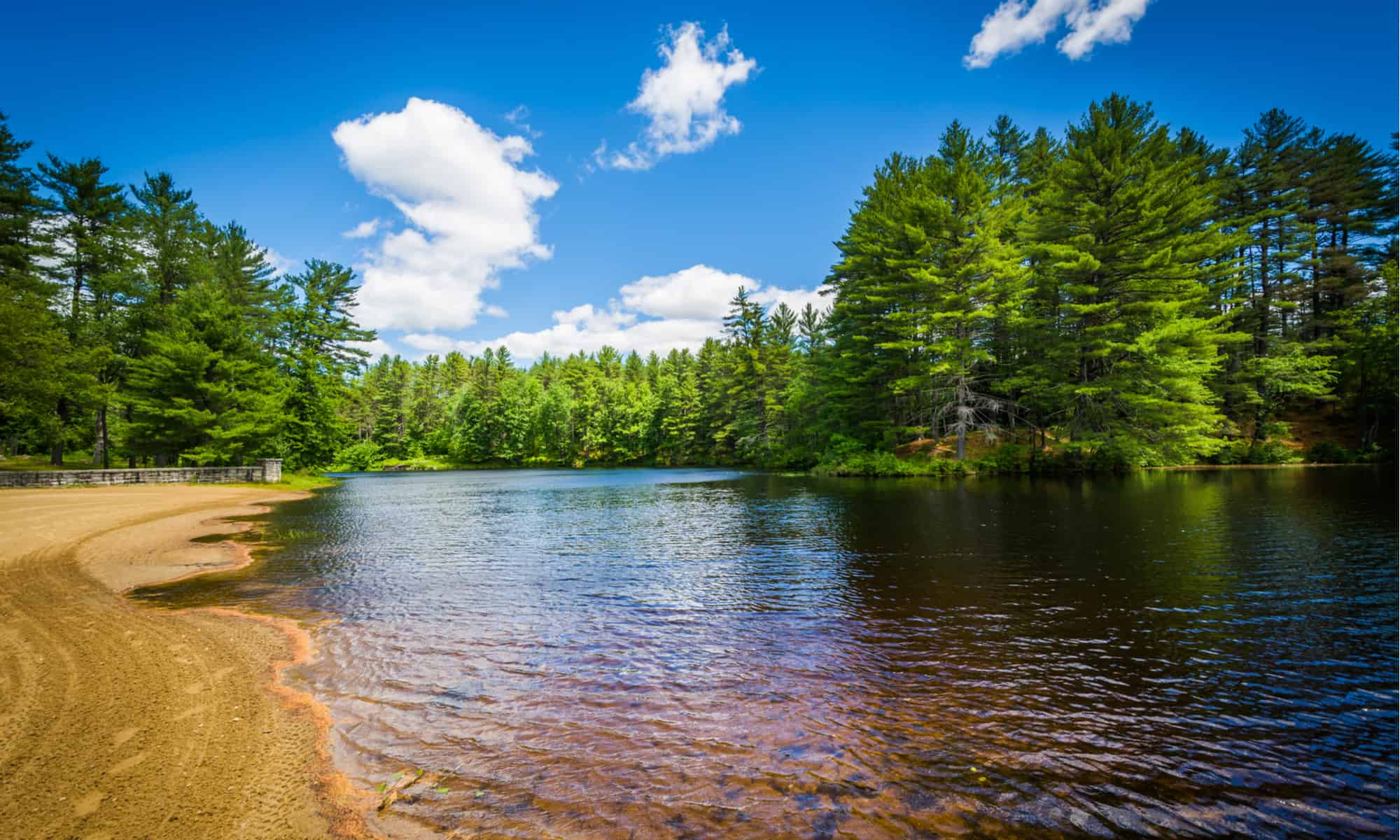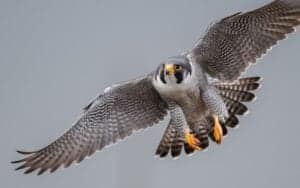New Hampshire is smaller state with only 18 miles of coast on the Atlantic. However, this coastal access opens the door to sea duck hunting in addition to hunting inland. Scoters and eiders can be found along the coast and flocks of wood duck, mallards and black duck can be found inland, especially in the northern half of the state. Maybe you are ready to give duck hunting a shot or maybe you’re an expert waterfowler but here is everything you need to know about duck hunting season in New Hampshire including season dates, bag limits and more!
What Kinds of Ducks are in New Hampshire?

The three most common ducks harvested in New Hampshire are wood ducks,
mallards
and black ducks.
©Paul Reeves Photography/Shutterstock.com
The three most common ducks harvested in New Hampshire are wood ducks, mallards and black ducks. Less common are canvasback, pintails, redheads and scaup. Along the coast you will find plenty of scoters, eiders and long-tailed ducks.
Where can you Duck Hunt in New Hampshire?
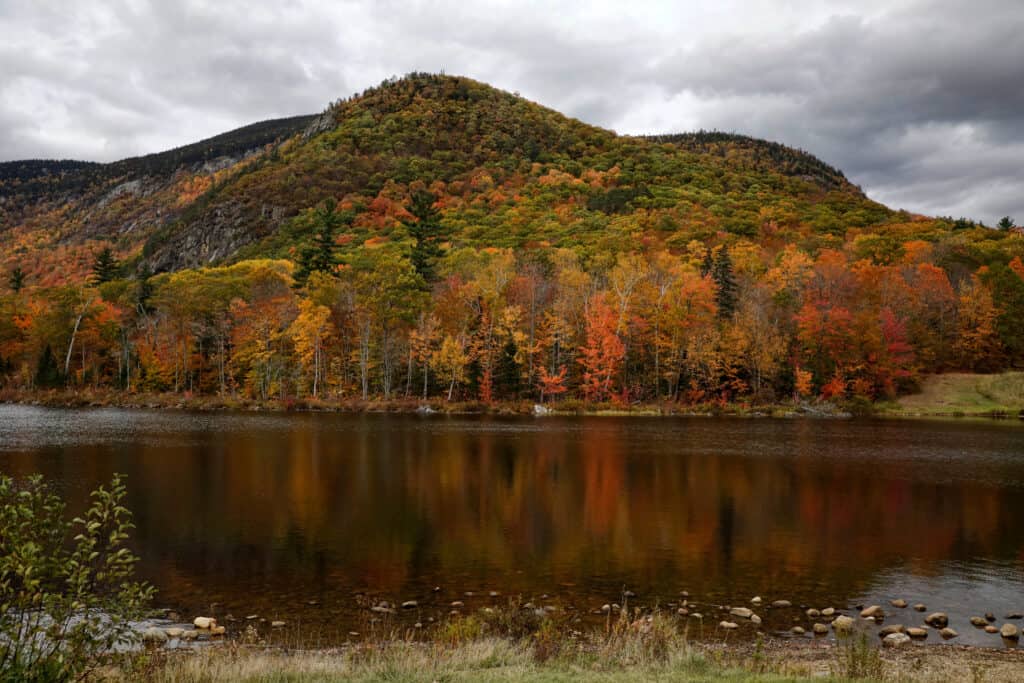
The northern part of New Hampshire has the most duck hunting. You can duck hunt in White Mountain National Forest and along the Connecticut River.
©Rhona Wise/Shutterstock.com
The northern part of New Hampshire has the most duck hunting. You can duck hunt in White Mountain National Forest and along the Connecticut River. Along the coast you can put your boat in at several boat ramps in Portsmouth or down further at Hampton Beach State Park. Some of the best hunting is on private property where beaver dams are plenty and attract large numbers of wood ducks especially. You do need permission to hunt on private land but it doesn’t hurt to ask around.
What are the Hunting Zones in New Hampshire?
New Hampshire has four hunting zones. It is divided almost I half with the North Zone and Inland Zones with the addition of a small Coastal Zone along the coast and the Connecticut River Zone that follows the river.
Duck Hunting Season Dates in New Hampshire
| Ducks, Mergansers, Coots and Sea DucksNorth ZoneOct. 2-Nov. 3 | |
| Inland Zone | Oct. 4 – Nov. 6 Nov. 23 – Dec. 18Connecticut River ZoneOct. 4 – Nov. 6 Nov. 23 – Dec. 18 |
| Coastal Zone | Oct. 5 – Oct. 11 Nov. 23 – Jan. 14 |
Other Season Dates
| Youth Waterfowl Hunting Weekend | September 24 & 25, 2022 |
Bag Limits and Possession Limits for Duck Hunting in New Hampshire

Bag limits in New Hampshire for sea ducks, such as this eider, are 4.
©Bildagentur Zoonar GmbH/Shutterstock.com
The bag limit for ducks in New Hampshire is 6 with a possession limit three times the bag number, so for ducks it is 18. Note the restrictions due to specific species and genders below.
| Species | Bag Limits | Possession Limits |
| Ducks* | 6 | 18 |
| Mergansers | 5 | 15 |
| Coots | 15 | 45 |
| Sea Ducks | 4 | 12 |
*Includes all species of ducks, with the following restrictions: No more than 2 mallards (1 of which may be a hen), 2 black ducks, 3 wood ducks, 1 pintail, 2 canvasbacks, 2 redheads, 1 scaup, and no more than 3 scoters, 3 long-tailed ducks, or 3 eiders (1 of which may be a hen). The mallard possession limit is 6, of which 3 may be hens).
What are the Shooting Hours?
The shooting hours in New Hampshire are ½ hour before sunrise to sunset.
Gear up! What is the Best Gear for Duck Hunting?

Choosing a string of realistic looking decoys is very important.
©iStock.com/Vershinin
Duck hunting has a reputation for being gear heavy, but it doesn’t have to be. You can show up in your waders with a gun and still take a few greenheads home. For a more elaborate hunt or if you want to make the most of your hunting hours then there is some gear that will help. Here is a list of gear you will need for duck hunting in New Hampshire:
- Shotgun: a 12 gauge or 20 gauge, can only hold three shells
- Shells: 3” shells are common, shot must be nontoxic
- Gun case/bag/sleeve: waterproof is a must
- Decoys: Choosing a string of realistic looking decoys is very important. A dozen lightweight decoys with a mix of male and females ducks should be enough for a simple spread. Research different patterns like the fishhook or “L” pattern making note of the wind direction and location of your blind.
- Duck callers: Practice makes perfect. If you haven’t practiced your duck call since last season take some time to refresh your skills. You can have a string of callers to attract different ducks to use throughout your hunt. If you are really good you could head down to Arkansas for the annual World Duck Calling Championship!
- Cooler: If you’ve been up since 4am you’re going to get pretty hungry mid-hunt. Bring a cooler into your blind or keep one in your vehicle so you can stay onsite for more hunting time. Pack simple snacks like beef jerky and nuts are great along with some sandwiches or a thermos full of chili.
What is the Best Kind of Blind?

Choosing the kind of blind and the location of your blind is key to success.
©Maria Dryfhout/Shutterstock.com
The best blind really depends on your preference and the kind of hunting you are doing. You can make your own by using nearby brush, cattails, reeds and bulrush. Bring a roll of wire and a wire cutter or use elastic bungee cords to bind vegetation to your boat or blind as well. If you want a commercial blind there are many different styles. The most common is the A-frame that allows you to comfortably stand up and pop out when ducks are in range. Larger A-frames can accommodate a few hunters and their dogs so these work well when hunting with a party. Layouts are good for field hunting, which is common in New Hampshire, as well as for low wetlands.
For sea duck hunting you can go out in a larger duck boat or a specialized sea duck kayak. Both will need to be camouflaged to blend in. The open water sea duck kayaks are usually a dark gray to blend in with the ocean from above.
What Should you Wear Duck Hunting?
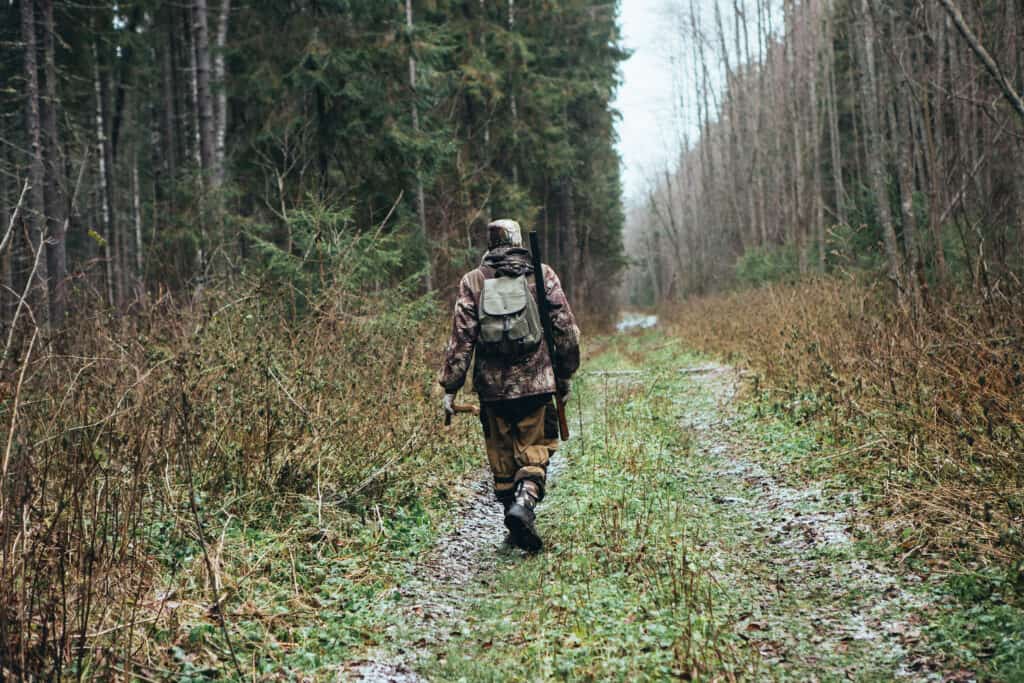
Duck hunting has a reputation for being gear heavy, but it doesn’t have to be.
©Scharfsin/Shutterstock.com
Hunting season starts in October and rolls on into January so you know it’s going to be cold. Having the proper clothing and dressing in layers is crucial for an enjoyable hunt. Here are some of the things you should wear:
- Boots: From standing in you blind to traipsing through deep mucky water, you need good boots! Make sure they are comfortable, waterproof and have a liner for warmth.
- Waders: If you pop some wood duck on the other side of a beaver dam you know you’re going to need to wade through a muddy bottomed pond to retrieve your prize (unless, of course you have a trusty hunting dog…that comes later). You can get waders that are all one piece including boots or separate waders. They can be lined for cooler temps and are made of durable, water resistant fabric.
- Camo: Even if you got up extra early to nab that great spot along the Connecticut it won’t do you much good if your head (or your hunting buddies head) is sticking out. Ducks have good eyesight and can detect color so blending in with the habitat is so important for a good hunt. The camouflage designs they make today are so detailed and realistic looking. Find something that matches as closely as possible…and cover your head and face!
- Life vest or PFD: If you are duck hunting from your boat be sure to have a properly fitting life vest. Choose one that is made specifically for hunting with wider arm openings that allow for more movement.
Hunting with your Dog
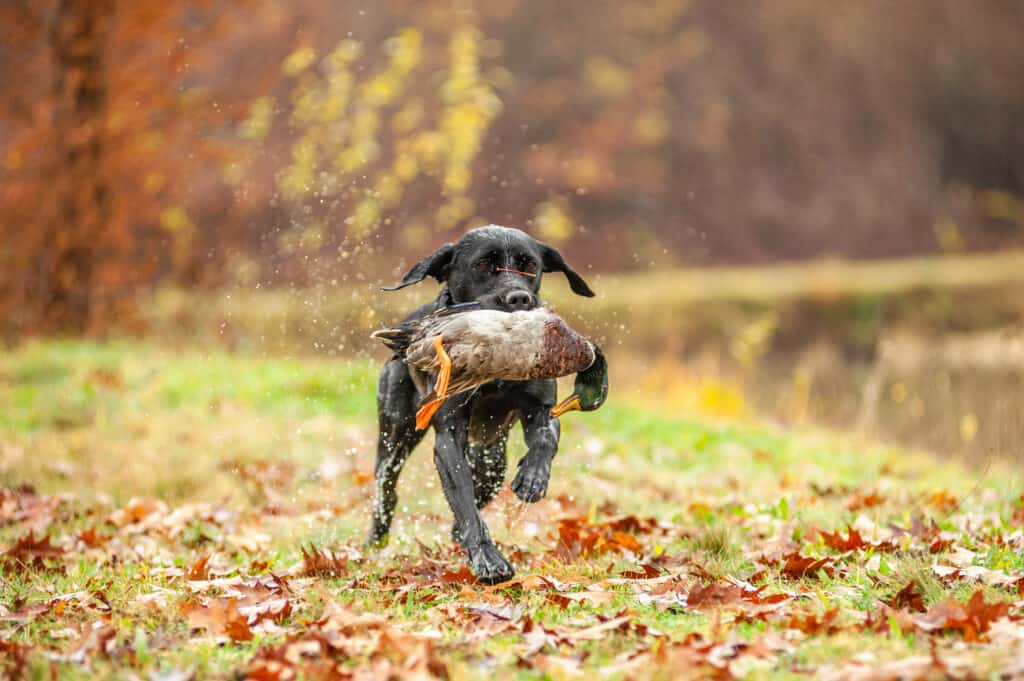
Dogs are hunters by nature, which is one reason they like toys so much.
©Anna Pozzi – Zoophotos/Shutterstock.com
If you have been training your dog since it was a puppy to be a hunting companion it can be so rewarding the first time you go out on your first hunt together. He may not nail every retrieval the first time but watching him track and retrieve his first duck is quite an experience! The dogs that are commonly used as duck dogs are Labrador, Golden and Chesapeake Bay retrievers. Be sure to have the right gear for your dog too. They make fitted lined dog vests for warmth and protection which can come in handy in the chilly New Hampshire winter.
Factors for Success
You will find waterfowlers that swear by a lucky hunting spot, others only use one brand of shotgun, but your hunting success really depends on a lot of variables. One of the most important keys to success is scouting. Driving around the day before a hunt to see where the flocks of ducks are can be very telling as to where you want to set up shop in the morning. Once you have found the perfect spot be sure to arrive early to set up your spread and blind. Don’t waste your precious hunting hours not being in a ready position. Lastly, check the weather. Don’t be caught off guard by a downpour or under dress for a cold front coming in. A few days before hunt day take a look at the extended forecast so you can prepare.
Where are the Best Places to Duck Hunt in New Hampshire?
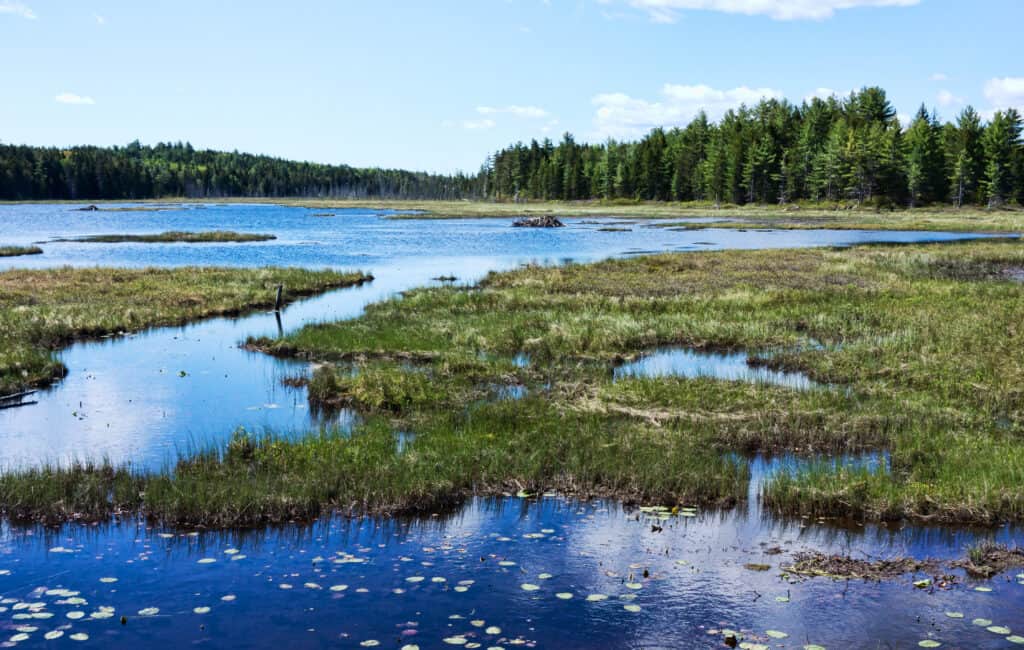
Wood ducks are actually one of the most populous ducks in New Hampshire and can be found by beaver dams or along wetlands.
©TFolsom99999/Shutterstock.com
The best places to duck hunt in New Hampshire are along the coast, along the Connecticut River and in White Mountain National Forest. The northern half of New Hampshire really does have the best hunting as well. Wood ducks are actually one of the most populous ducks in New Hampshire and can be found by beaver dams or along wetlands. Eiders and scoters are the most harvested ducks along the coast.
Meet the Species: 3 of the Most Common Ducks in New Hampshire

The wood duck or Carolina duck, Aix sponsa, is a species of perching duck found in North America. It is one of the most colorful North American waterfowl.
©Rudolf Ernst/Shutterstock.com
- Wood Duck: The wood duck is one of the most colorful ducks with an iridescent head that looks green that fades to blue to almost a purple depending on the sun light. They have red eyes and a bright yellow beak. The feathers on their head flow back down the back of their neck like a slicked back hairdo. Wood ducks have unique black and white markings on their neck and wings. Once you know what they look like they are easy to identify.
- Mallard: In most states mallards are the most harvested duck, but in New Hampshire they take second. The male mallard is also a colorful duck with an emerald green head, yellow beak orange legs and a blue patch on their lower wing feathers (speculum). Females are less colorful with a mix of patterned brown feathers and a brown beak. They do match the males by having blue on its wings as well.
- Black Duck: If you are not familiar with black ducks than you are probably picturing an all black duck with a yellow bill. However black ducks are not all black at all, they are a mix of speckled browns with a lighter head and darker crown. In flight you can see the brilliant blue patch on their lower wings. They do have a yellow bill similar to mallards.
Can you duck hunt in New Hampshir
What is the bag limit for wood ducks in New Hampshire
Up Next
Thank you for reading! Have some feedback for us? Contact the AZ Animals editorial team.

